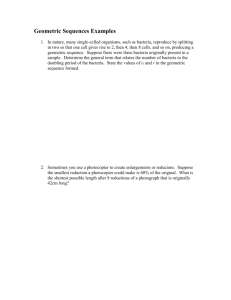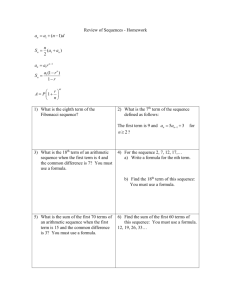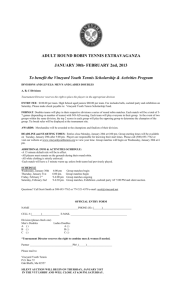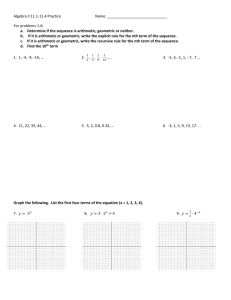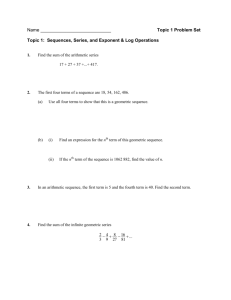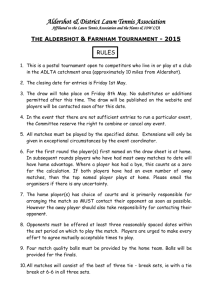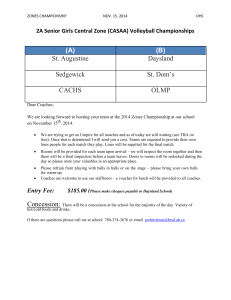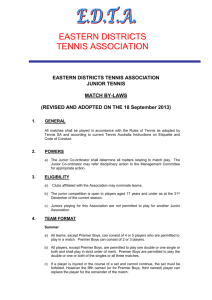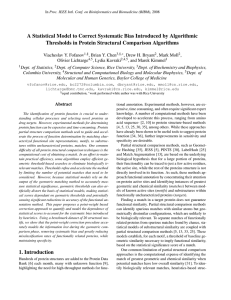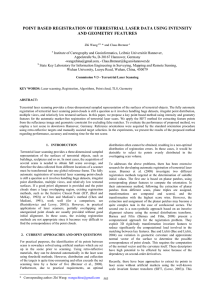1.2 – Bacteria Growth, Geometric Sequences #1
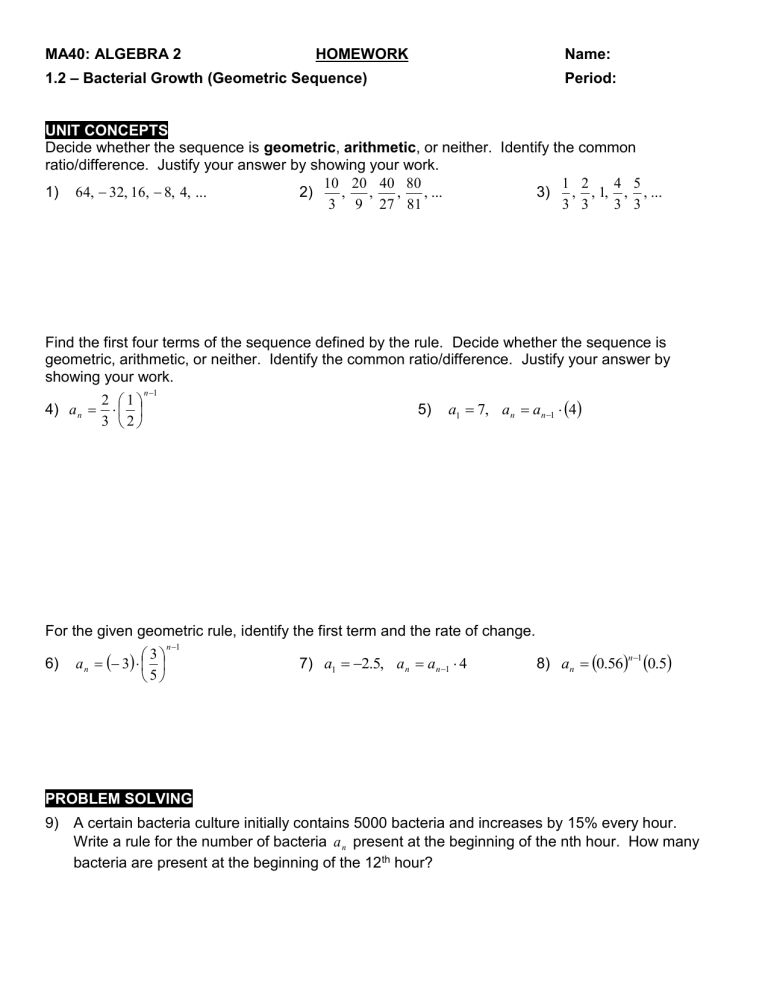
MA40: ALGEBRA 2 HOMEWORK
1.2 – Bacterial Growth (Geometric Sequence)
Name:
Period:
UNIT CONCEPTS
Decide whether the sequence is geometric , arithmetic , or neither. Identify the common ratio/difference. Justify your answer by showing your work.
1) 64 ,
32 , 16 ,
8 , 4 , ...
10
2) ,
3
20
,
9
40
27
,
80
81
, ...
1
3) ,
3
2
3
,
4
1 , ,
3
5
3
, ...
Find the first four terms of the sequence defined by the rule. Decide whether the sequence is geometric, arithmetic, or neither. Identify the common ratio/difference. Justify your answer by showing your work.
n
1
4) a n
2
3
1
2
5) a
1
7 , a n
a n
1
For the given geometric rule, identify the first term and the rate of change. n
1
6) a n
3
5
7) a
1
2 .
5 , a n
a n
1
4 8) a n
0 .
56
PROBLEM SOLVING
9) A certain bacteria culture initially contains 5000 bacteria and increases by 15% every hour.
Write a rule for the number of bacteria a n
present at the beginning of the nth hour. How many bacteria are present at the beginning of the 12 th hour?
10)
The men’s U.S. Open tennis tournament is held annually in Flushing Meadow in New York City.
In the first round of the tournament, 64 matches are played. In each successive round, the number of matches played decreases by one half. a) Find an explicit rule for the number of matches played in the nth round. For what values of n does your rule make sense? b) Find a recursive rule for the number of matches played in the next round. For what values of n does your rule make sense? c)
Find the total number of matches played in the men’s U.S. Open tennis tournament.
LOOKING BACKWARD
Perform the indicated operation. Justify your answer by showing your work.
2
11)
2
3
5
2
12)
2
3
2
12
5
13)
2
3
2
2
14) Does 15
3
2
15
2
? Explain. 15) Does 5
2
5
? Explain
LOOKING FORWARD
16) For each relation, identify the domain and range. Is the relation a function?
(a) (b) (c) (d)
(-3,1), (-1,7), (0,7), (2,2), (3,-8) x -5 -1 0 -1 -2 y 2 3 7 4 3
Domain: Domain: Domain: Domain:
Range: Range: Range: Range:
Function? Function? Function? Function?
